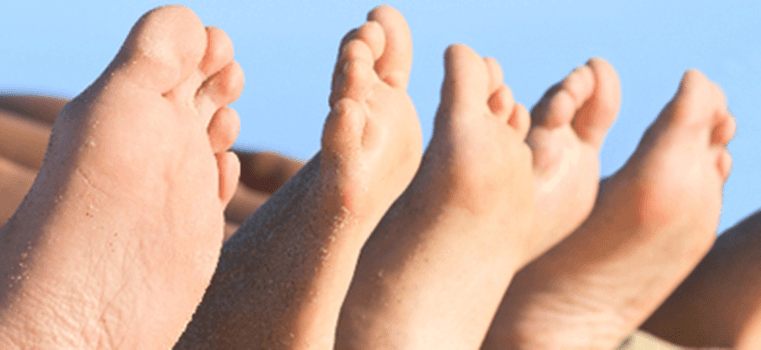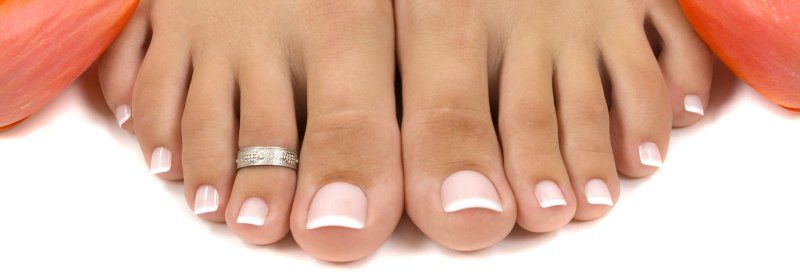Mark Reed, DPM
DABFAS FAPWCA

714-528-3668
Diabetic Foot Education
Diabetic Pathophysiology
Diabetes is a disease of discipline. Successful management of diabetes requires daily monitoring, proper diet, proper exercise, and using preventative interventions such as diabetic shoes and regular checkups with the podiatrist to ensure limb or life-threatening ulcerations do not occur. Diabetic neuropathy if left untreated will lead to Charcot joint destruction and significant disability. Diabetic patients also have a number of skin diseases related to their condition that must be managed.
For Diabetic Wound Information, click here.
For Diabetic Nutritional Guideline Information, click here.
For Diabetic Charcot Foot Information, click here.
For Diabetic Foot Infection Information, click here.
For Diabetic Peripheral Neuropathy Information, click here.
How Does Diabetes Affect the Cells of the Body?
People who have diabetes have a lack of insulin in their blood. Insulin is made in an organ called the pancreas. Insulin is important to allow glucose (blood sugar) to get into the cells of the body. Put another way, insulin opens the door to let blood sugar to enter most cells in the body. Blood sugar is a food for the body's cells. If insulin is low or absent in the blood, then the cells don't get fed the blood sugar they need. If the blood sugar cannot get into the body's cells, then it builds up in the blood stream and the sugar count increases on the blood tests that we do. Also, as the blood sugar increases and cannot get into the body's cells it has the effect of drawing water out of the cells and shrinks them up making them even less healthy.
Blood vessels are also made up of cells lining the capillaries that are microscopic smooth muscles called Tunica Intima Muscles. These are very special smooth muscles that can absorb sugar without the presence of insulin and is the only muscle in my body that has this unique characteristic. As the sugar builds up in the blood stream, the Tunica Intima muscles absorb more and more glucose, and the cells swells up and this causes a narrowing of the blood vessel that interferes with oxygen being released to the tissues. In addition, this causes a decrease in the circulation to the skin, the kidneys and the eyes that leads to the primary causation of diabetic complications. This is why people with diabetes often have complications with their legs, their eyesight and kidney function. The nerves in the body are affected a bit differently due to diabetes. Nerve cells will allow blood sugar to enter into the nerve tissue and will cause the nerves to malfunction. Over time this will damage the nerve cell and cause the nerve to die. This nerve injury causes numbness and tingling in the feet and sometimes in the hands. It is very important that people with diabetes learn about their condition, control their blood sugar, and exercise.
Diabetic Patient Precautions
Ulcerations, infections and gangrene are the most common foot and ankle problems that the patient with diabetes must face. As a result, thousands of diabetic patients require amputations each year. Foot infections are the most common reason for hospitalization of diabetic patients. Ulcerations of the feet may take months or even years to heal. It takes 20 times more energy to heal a wound than to maintain a health foot.
There are two major causes of foot problems in diabetes:
Nerve Damage (neuropathy): This causes loss of feeling in the foot, which normally protects the foot from injury. The protective sensations of sharp/dull, hot /cold, pressure and vibration become altered or lost completely. Furthermore, nerve damage causes toe deformities, collapse of the arch, and dry skin. These problems may result in foot ulcers and infections, which may progress rapidly to gangrene and amputation. However: Daily foot care and regular visits to the podiatrist can prevent ulcerations and infections.
Loss of circulation (angiopathy): Poor circulation may be difficult to treat. If circulation is poor gangrene and amputation may be unavoidable. Cigarette smoking should be avoided. Smoking can significantly reduce the circulation to the feet significantly. There are certain medications available for improving circulation and by-pass surgery may be necessary to improve circulation to the feet. Chelation therapy is an alternative form of treatment for circulatory problems that is not well recognized by the medical community at large. Daily foot care and regular visits to the podiatrist can often prevent or delay the need for amputation.
Do the Following to Protect Your Feet
1. Examine Your Feet Daily
Use your eyes and hands or have a family member help.
Check between your toes.
Use a mirror to observe the bottom of your feet.
Look for these Danger Signs:
- Swelling (especially new, increased or involving one foot)
- Redness (may be a sign of a pressure sore or infection)
- Blisters (may be a sign of rubbing or pressure sore)
- Cuts or Scratches or Bleeding (may become infected)
- Nail Problems (may rub on skin, cause ulceration or become infected)
- Maceration, Drainage (between toes)
If you observe any of these danger signs, call your podiatrist at once.
2. Examine Your Shoes Daily
Check the insides of your shoes, using your hands, for:
- Irregularities (rough areas, seams)
- Foreign Objects (stones, tacks)
3. Daily Washing and Foot Care
- Wash your feet daily.
- Avoid water that is too hot or too cold.
- Use lukewarm water.
- Dry off the feet after washing, especially between the toes.
- If your skin is dry, use a small amount of lubricant on the skin.
4. Fitting Shoes and Socks
- Make sure that the shoes and socks are not too tight.
- The toe box of the shoe should have extra room and be made of a soft upper material that can "breath."
- New shoes should be removed after 5-10 minutes to check for redness, which could be a sign of too much pressure: if there is redness, do not wear the shoe. If there is no redness, check again after each half hour during the first day of use.
- Rotate your shoes on different days.
- Ask your podiatrist about therapeutic (prescription) footwear, which is a covered benefit for diabetic patients in many insurance plans.
- Tell your shoe salesman that you have diabetes.
5. Medical Care
- See your podiatrist on a regular basis.
- Ask your primary care doctor to check your feet on every visit.
- Call your doctor if you observe any of the above danger signs.
6. Do Not Do These Dangerous Acts
- Do Not Walk Barefoot - Sharp objects or rough surfaces can cause cuts, blisters, and other injuries.
- Do Not Use Heat on the Feet - Heat can cause a serious burn, especially if the patient has neuropathy.
- Do Not Apply a Heating Pad to the Feet
- Do Not Soak Your Feet in Hot Water
- Do Not Use Chemicals or Sharp Instruments to Trim Calluses - This could cause cuts and blisters that may become infected.
- Do Not Cut Nails into the Corners - cut nails straight across.
- Do Not Smoke - smoking reduces the circulation to your feet.
The Ischemic Foot
The term "ischemic foot" refers to a lack of adequate arterial blood flow from the heart to the foot. There are a wide variety of possible causes for poor arterial circulation into the foot including arterial blockage from cholesterol deposits, arterial blood clots, arterial spasm, or arterial injury. The ischemic foot is also referred to as having arterial insufficiency, meaning there is not enough blood reaching the foot to provide the oxygen and nutrient needs required for the cells to continue to function.
Diagnosis
The result of insufficient blood supply to the foot can manifest itself in a variety of ways depending upon how severe the impairment to circulation. Early symptoms may include cold feet, purple or red discoloration of the toes, or muscle cramping after walking short distances (intermittent claudication). Later findings may include a sore that won't heal (ischemic ulcer), pain at night while resting in bed, or tissue death to part of the foot (gangrene).
The diagnosis of ischemia is made by reviewing the patient's symptoms, examination of the foot, and special testing to evaluate the circulation. The examination should reveal cold skin temperature, and skin atrophy that causes the skin to appear shiny or paper thin with loss of normal hair on tops of the toes and on the lower leg. There is often a color change associated with ischemic feet. This may show as a purple discoloration of the toes, white blanching of the toes when the foot is elevated, and red discoloration when the foot is hanging down. Additionally, the two arterial pulses in the foot will not be as strong as normal or may be entirely absent. Certainly, the presence of a pale looking ulcer, or black gangrenous toes would be an ominous sign of poor circulation.
When these findings are present further testing is usually required. This will often include arterial Doppler testing. This test uses sound waves to listen to the blood flow through the arteries and is able to record the quality of the blood flow and also the blood pressure. If the quality of blood flow is poor and the pressure is greatly diminished, this would indicate a lack of adequate blood flow. A second test may be required to further determine where the arterial blockage is located and how much blood is able to squeeze past the blockage. This test is known as an arteriogram. The arteriogram requires the injection of a special dye into the artery so that the artery will be visible when an x-ray is taken. This x-ray can then show where the artery is blocked and how much blood can flow past the blockage.
Treatment
In the early stages of ischemia of the foot, the doctor will often recommend a program of walking exercises to increase blood flow, protective shoes and insoles, if necessary, to protect the skin from rubbing producing irritations which may lead to ulcerations. Medications are also available to help improve the blood flow into the feet.
One of the most significant complications of diabetes is peripheral arterial disease and the requirement of re-vascularization to prevent limb loss. Dr. Mark Reed has over 25 years of experience in managing diabetic complications and specifically dealing ulcerations in patients who are not re-vascularization surgical candidates who have peripheral arterial disease. One intervention that has been highly successful is the use of nitroglycerin patches over the posterior tibial artery or proximal to the ulcer to increase enough vascularity to the skin to heal the ulcer and / or prevent re-ulceration once the ulcer has healed. There are many other interventions that Dr. Reed employs to increase vascularity to help heal patients with non-operative peripheral vascular disease beside using nitroglycerin patches. Nitroglycerin has been using medicine for over 75 years and is an extremely safe medication with very few side effects. The two most common side effects are a frontal transient headache that is decreased by reducing the dosage of the nitroglycerin patch initially and usually passes in three days. The second complication from the use of nitroglycerin is dizziness when standing up too quickly that is a very rare complication in most patients.
In more advanced stages of ischemia, a referral to a vascular specialist is appropriate for further evaluation. Oftentimes, if the patient is in otherwise good general health, a surgery may be recommended to bypass the blocked artery or to clean out the area of blockage. This can be major surgery, however in these cases, failure to improve the circulation into the foot may result in gangrene, which may ultimately require amputation of part of the foot or leg. The surgery is an attempt to save the foot and leg from the impending amputation. The surgery has improved over the years and the chances for success are now greater than ever before. However, each individual needs to be evaluated as to the potential risks and possible benefits from this type of surgery.
DISCLAIMER: MATERIAL ON THIS SITE IS BEING PROVIDED FOR EDUCATIONAL AND INFORMATION PURPOSES AND IS NOT MEANT TO REPLACE THE DIAGNOSIS OR CARE PROVIDED BY YOUR OWN MEDICAL PROFESSIONAL. This information should not be used for diagnosing or treating a health problem or disease or prescribing any medication. Visit a health care professional to proceed with any treatment for a health problem.















